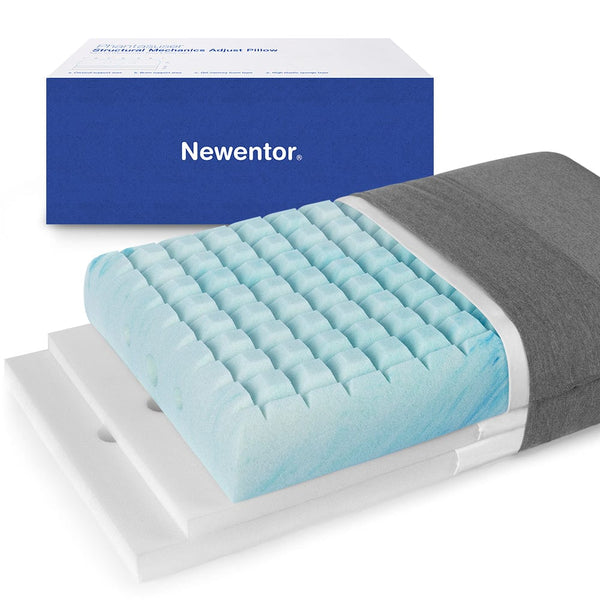When selecting a cooling pillow, it’s essential to keep a few factors in mind to ensure you’re getting the best possible sleep:
1. Cooling Technology
There are several types of cooling technologies used in pillows, such as cooling gel, breathable fabrics, and phase-change materials (PCM). Cooling gel pillows use a layer of gel-infused memory foam that draws heat away from your head, while phase-change materials adjust to your body temperature. Look for a pillow with high-quality cooling technology for the most effective temperature regulation.
2. Pillow Fill
Pillow fill is another important consideration. Options like memory foam, latex, or down alternative provide different levels of support and breathability. Memory foam with cooling gel is often a great choice as it contours to your head and neck while maintaining a cool feel. Latex pillows are naturally breathable and can be a solid choice for those who tend to sweat at night.
3. Sleep Position
Your preferred sleep position plays a role in pillow selection. Side sleepers may prefer a thicker, firmer pillow for neck support, while back and stomach sleepers might benefit from a thinner pillow to avoid neck strain. Choose a pillow that fits your sleep style and provides adequate support while keeping you cool.
4. Pillow Case Materials
When choosing a pillowcase, opt for breathable materials like Modal fabric or cotton fabric. Modal is an excellent choice due to its superior breathability, moisture-wicking ability, and silky smooth texture, which help maintain a cool, dry sleep environment—ideal for those who overheat at night.
Cotton, on the other hand, is naturally breathable and soft, allowing air to flow freely to keep you comfortable all night long. Both fabrics offer a perfect balance of comfort and breathability for a restful sleep.

























